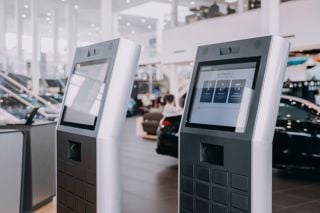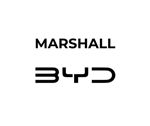James Lever, client services director of TekCor4, which began over 30 years ago, explains how unlocking the full potential of customer data can help dealers to retain more customers and boost their profitability.
For franchised dealerships, there is a constant challenge to balance the need to achieve short-term profitability targets with maintaining long-term customer relationships. In many ways, going the extra mile for customers – providing competitive pricing and superior service – has an adverse effect on profitability.
The key to overcoming this challenge and balancing the best of both worlds is to harness the full potential of data. When done effectively, every single customer interaction is an opportunity to boost customer satisfaction and sustain business growth. If you are looking to leverage data in this way, there are four important areas to consider – accuracy, messaging, touchpoints, and efficiency.
Let’s start with accuracy. Before any other steps are taken, it is crucial that your data is accurate and up to date. Without accurate data, your efforts are mere shots in the dark. The manual input of vehicle data into a DMS often leads to poor information quality, with estimates suggesting that 40% of MOT dates are out of date. When it comes to routine servicing, the statistics don’t get too much better; 34% of service dates are out of date by over 60 days.
Our data tells us that a staggering 50% of active workshop customers do not return to their original dealer for their MOT, while 35% of customers won’t go back for their next service. If you consider the figures above, does this really come as a surprise? Ultimately, inaccurate data is a significant barrier to building relationships with customers beyond the initial sale.
Although prioritising accurate data is vital for customer retention, it won’t boost your profitability on its own. It’s how you use that data that really matters; accurate data provides the best possible foundation for crafting clear and compelling messages, and it also enables you to contact customers at exactly the right time.
This is not possible with a basic DMS, but it is with predictive software at your disposal.
The software arms you with the data to highlight what the required message is, how it should be delivered, and when – for every individual customer. As a result, you can deliver a tailored message at precisely the right time for the customer.
The key to taking the next step and using accurate data and effective communication to drive profitability is identifying more customer touchpoints to generate additional profit.
Typically, new cars have over 200 variables when it comes to managing their aftercare, far beyond just basic services and MOTs. Unlike a DMS, predictive systems can maximise the profit opportunities provided by these variables. Capable of evaluating a multitude of variables, including mileage, age, vehicle specifications, and components, these systems identify opportunities for customer interaction – opportunities that would not consistently present themselves with a DMS.
Maximising touchpoints is increasingly essential as the electric vehicle (EV) parc continues to grow.
Our research indicates that EVs only provide 60% of the touchpoint opportunities in the first ten years of their lifecycle compared to internal combustion engine vehicles. Logically, this should lead to a reduction in the number of customer visits, which would also see labour hours, oil sales, and parts sales fall.
Our data also tells us that 78% of vehicles under three years old will be EVs by 2030. In a market where the opportunity to sell labour, parts, and services looks set to diminish, predictive data can help you give customers more reasons, outside of their routine service, to engage and visit.
How does efficiency come into the equation? Well, a basic DMS isn’t particularly efficient; it can’t track and record every update to a driver or vehicle status, which can lead to inefficiencies and wasted resource.
A prime example of this is private changes in vehicle ownership. Between 15 and 25% of vehicles change owners every year, leading to central DMS records going out of date if they’re not constantly monitored. As a result, much of the advice above becomes obsolete, because you can’t be sure you’re even contacting the current owner of the vehicle.
This can lead to an enormous amount of wasted resource that could instead be directed to nurturing active customer relationships and acquiring new business. Predictive software can again be a solution to this issue, as it can directly access DVLA information and quickly identify when a vehicle sale has taken place, enabling you to update your records accordingly.
The journey to harnessing your data and keeping your customers engaged and loyal, while creating opportunities to profit, begins by using accurate data to inform your customer interactions.
It is then a matter of combining that data with the appropriate messaging to deliver the right message at the right time, and identifying more opportunities to get your customers through the door. As we’ve seen, data is also a valuable asset in preventing wasted time and resource.
If your dealership incorporates predictive software, it will take significant strides towards mastering these crucial factors and retaining customers for the long haul.
James Lever is client services director at TekCor4


















Login to comment
Comments
No comments have been made yet.